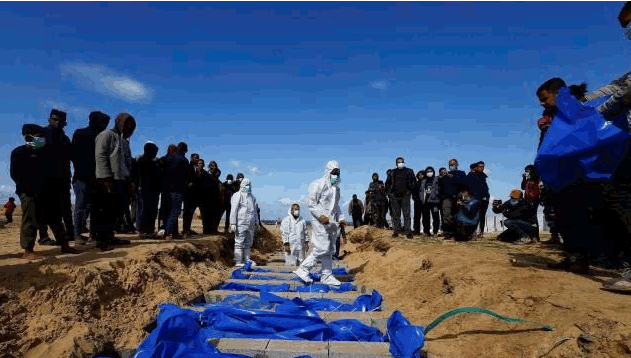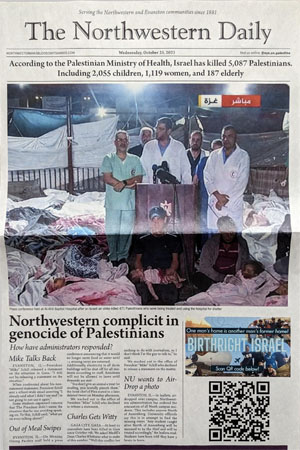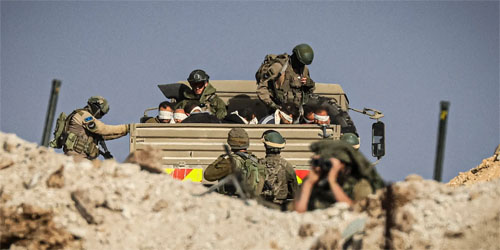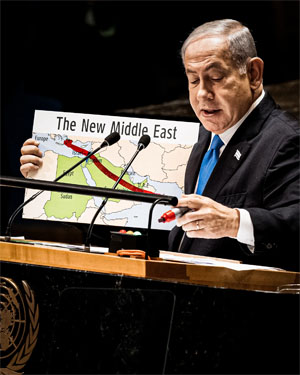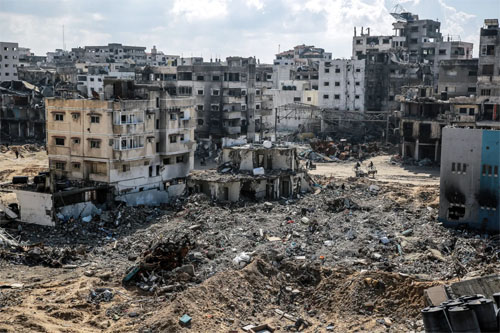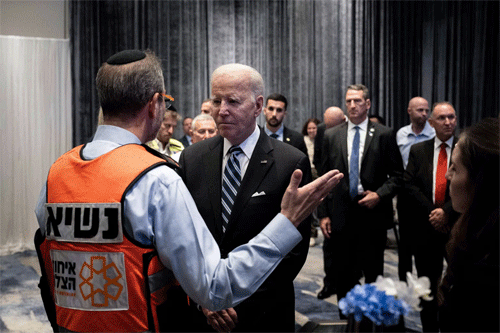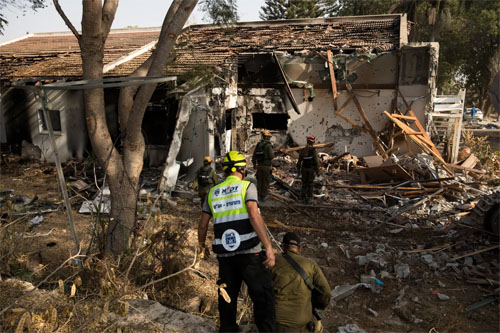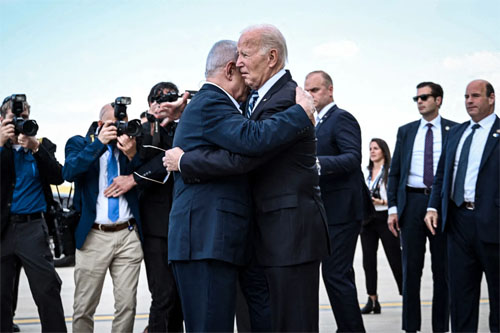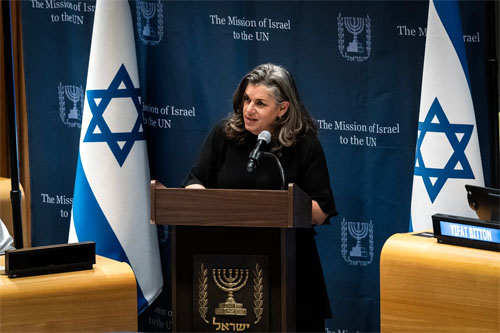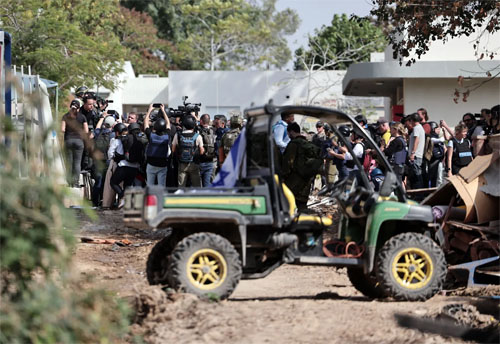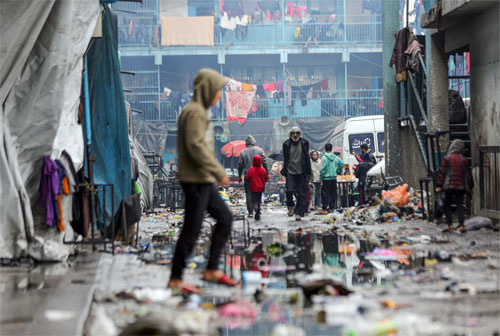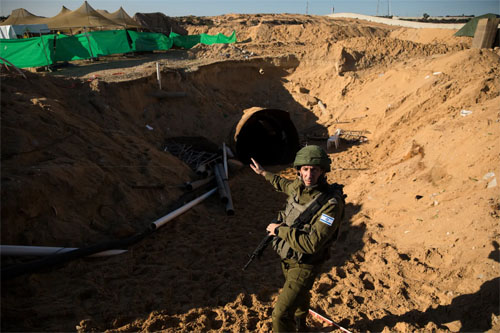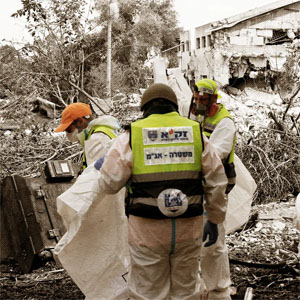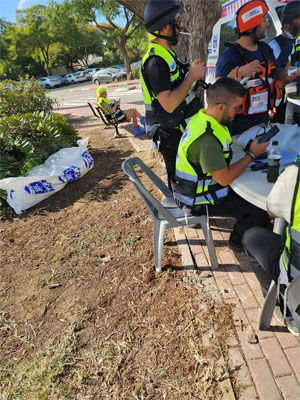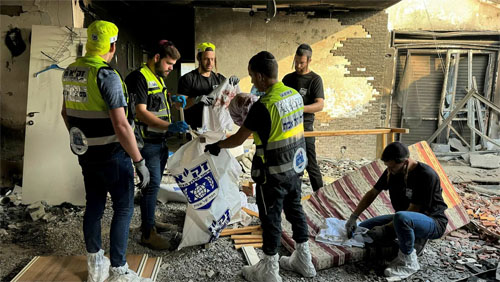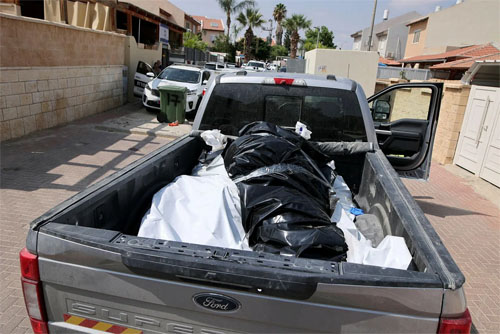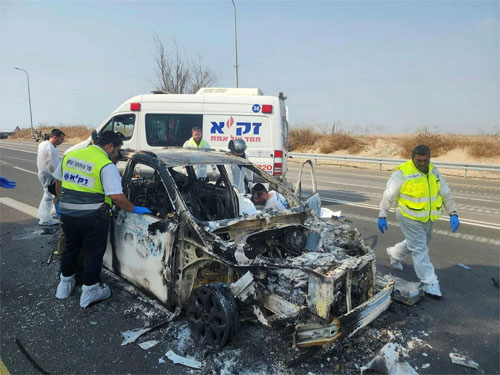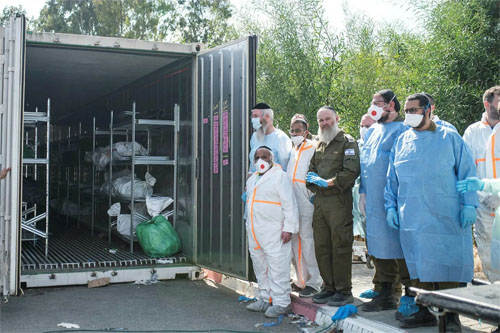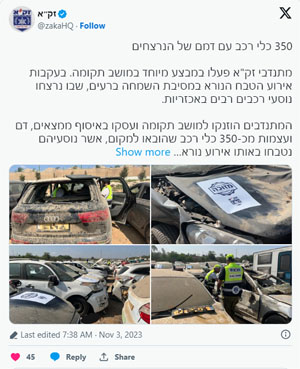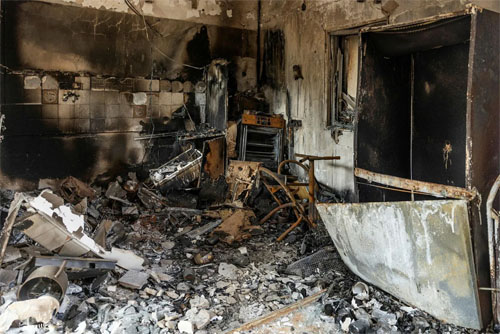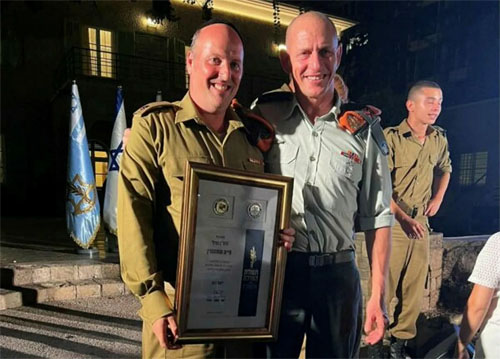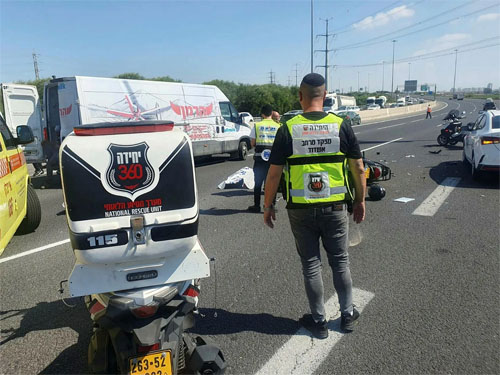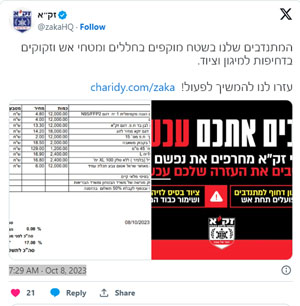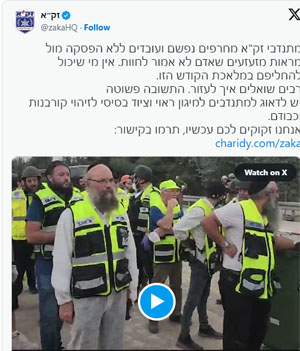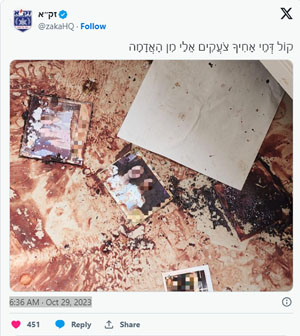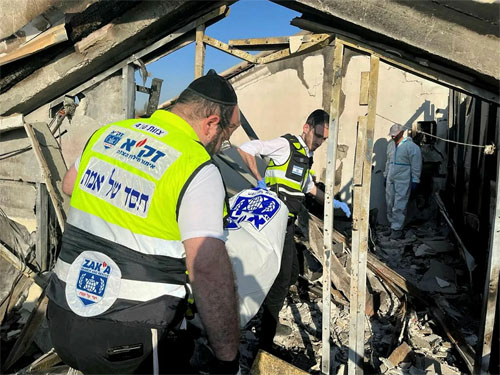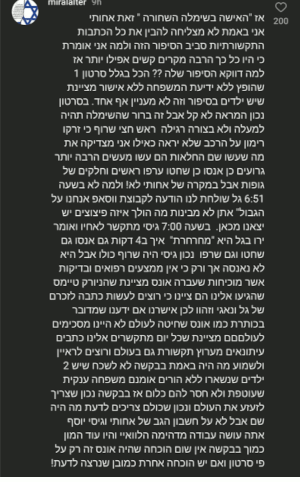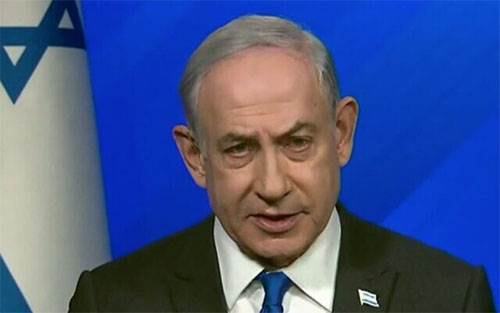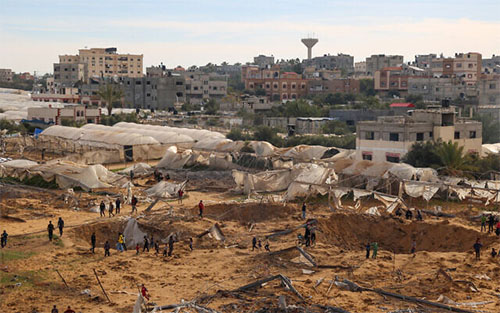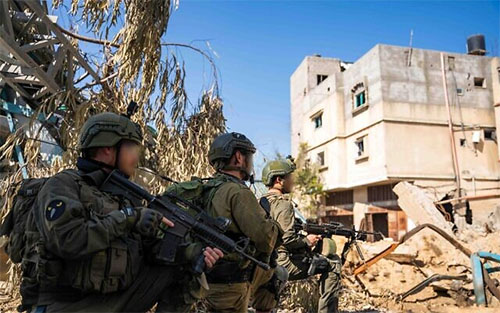Steve Skrovan: We've been speaking with Josh Paul. We will link to his work at ralphnaderradiohour.com. Up next, we'll uncover the vast espionage network that aims to stifle dissent on college campuses. But first, let's check with our corporate crime reporter, Russell Mokhiber.
Russell Mokhiber: From the National Press Building in Washington D.C., this is your Corporate Crime Reporter Morning Minute for Friday, January 19, 2024, I'm Russell Mokhiber. eBay will pay a $3 million criminal penalty for an August 2019 harassment and intimidation campaign targeting a Massachusetts couple in retaliation for their online coverage of eBay and for its obstruction of the investigation that followed. eBay executed a harassment campaign intended to intimidate the victims and to change the content of the newsletter’s reporting. The campaign included sending anonymous and disturbing deliveries to the couple's home, including a book on surviving the death of a spouse, a bloody pig mask, a fetal pig, a funeral wreath and live insects, sending private Twitter messages and public tweets criticizing the newsletter’s content, and threatening to visit the victims in Natick, Massachusetts. For the Corporate Crime Reporter, I'm Russell Mokhiber.
Steve Skrovan: Thank you, Russel. Welcome back to the Ralph Nader Radio Hour. I'm Steve Skrovan, along with David Feldman, Hannah, Ralph. Our government has spent a lot of time, money, and energy resisting Russian and Chinese spy operations. But what do we do when the spying is being done by our ally, in this case, Israel? David?
David Feldman: James Bamford is a best-selling author, Emmy-nominated filmmaker for PBS, award-winning investigative producer for ABC News, and winner of the National Magazine Award for Reporting for his writing in Rolling Stone on the war in Iraq. He is the author of the first book ever written on the National Security Agency (NSA), as well as other books, including Spy Fail: Foreign Spies, Moles, Saboteurs, and the Collapse of America's Counterintelligence. Welcome to the Ralph Nader Radio Hour, James Bamford.
James Bamford: Great. Thanks for having me on your show. Appreciate it.
Ralph Nader: James Bamford, for years, has been one of the most proficient, accurate, important investigative reporters and authors in our country. He wrote the first full-length report on the secretive, gigantic national security agency known as the NSA, which doesn't even have a congressional charter. He has had a sterling record of accuracy, and he has published two articles recently in The Nation magazine. One of them is titled Israel's War on American Student Activists.
For years, the Israel on Campus Coalition (ICC), a little-known organization with links to Israeli intelligence, has used student informants to spy on pro-Palestinian campus groups. And in the second article [Who Is Funding Canary Mission? Inside the Doxxing Operation Targeting Anti-Zionist Students and Professors: Americans who give money to Canary Mission are potentially committing a serious crime by acting as agents of a foreign power.], he goes into more detail on how organized this is, who's paying for it in the U.S., and its connections to similar groups in Israel. What's your thesis here?
James Bamford: The thesis is that Israel has been doing a lot of spying, covert operations, troll farms, doxing, all kinds of things in the United States for not just years, but decades. And the FBI (The Federal Bureau of Investigation) never does anything about it. They put a secret agent in the Trump campaign. The FBI went after Russia, but it never went after Israel.
One of the key themes of the book I wrote, Spy Fail, was the fact that these spies come over here, especially from Israel, and nothing happens. The FBI, with regard to Israel, turns its eyes away, and nobody gets arrested, and it just goes on and on.
Ralph Nader: Do you think some of these groups should be filing under the Foreign Agents Registration Act of the U.S. Treasury? Tell us about that.
James Bamford: Some of these groups should be arrested for being agents of a foreign government. If you're an American and you're contributing money and support to a clandestine foreign operation, a clandestine foreign agency of a foreign government, that's pretty much the definition of being an agent of a foreign government.
So the FBI has gone after the Senator Bob Menendez from New Jersey for his connections to Qatar and Egypt and it went after the mayor of New York for foreign connections, but it's never gone after anybody for foreign connections to Israel. And that's where really most of these foreign connections are.
Ralph Nader: Tell us what happened at Harvard University when the Harvard Palestine Solidarity Committee issued a public letter with students signing on, as students have done throughout the years on civil rights, pro-peace, closing the Vietnam War, Iraq War, and so forth. But this time, something different happened. Can you explain?
James Bamford: Yeah. This time, there was huge action against them. There was a doxing truck that showed up at Harvard, a truck that had electric signs on the sides of the truck that listed the names and addresses and detailed information about the signers of letter, and the truck then went to the houses of some of these people. The whole idea was to dox them, to intimidate them, to expose who they were, and cause havoc in their lives. That was one of the things the FBI did.
The other thing is that there's a very secretive group or very secretive organization known as the Canary Mission. It is an organization that creates a blacklist that goes all over the internet. It shows people's names, pictures, and bio information, and then those people are basically derided for what they've said against Israel. They're called anti-Semitic and different things like that. It’s done to discourage these people from criticizing what's happening in Israel, particularly the war in Gaza. These are acts to intimidate the people who signed the public letter.
Ralph Nader: And this is a very well-funded collection of organizations. Can you go into that? In your article, one of the participants revealed that the budget for one year was $9 million.
James Bamford: It gets a lot of money, and its money comes from U.S. supporters. Canary Mission, for example, contributors are secret, largely. They don't have to declare who they are. Because of a mistake on a tax form at one point, it was discovered that one of the major contributors was Sanford Diller, a very wealthy Californian, who donated $100,000 to the front organization for the Canary Mission in Israel.
The way it worked is that he would donate it to a Jewish foundation. The foundation would then donate the money to another, basically a front company in New York. That way he’d get a tax deduction on it, but if the money went right to Israel, he wouldn't get any tax deduction. So they sent it through a front company, the Central Fund for Israel in New York.
From there it went to a front in Israel, which turned out to be just an old, padlocked building, not a real organization. Then it ran someplace else in Israel. It was tracked down to a rabbi who was in charge of it at one point. So, this mysterious money went to front companies and it was hidden. The U.S. government has plenty of power to stop these kinds of things, but it doesn't. It allows it to go on and on.
So you get people that are at Harvard or any other school, and it doesn't even have to be a school, and it doesn't have to be a student. There are professors and people working for companies who get put on this blacklist, the Canary Mission list, and their job opportunities are extremely limited because if anybody goes for a job and their potential employer looks on the internet, one of the first things they'll see is that the person’s name is on this blacklist, where they're called a variety of names, for doing something that's basically honorable.
Ralph Nader: Tell us about the experience that Tony Kleinfeld [James Anthony Kleinfeld] reported on in 2016, in an expose by Al Jazeera.
James Bamford: Tony Kleinfeld was Jewish. He was British, and he worked for the Al Jazeera television network as an undercover reporter. He was sent to Washington to do an undercover report on the influence of the pro-Israeli lobby in the Washington area, and he uncovered a great deal of information because he was posing as a pro-Israeli activist.
One of the things he discovered was that there was an organization called Israel on Campus, which is a coalition. It's a very secretive organization in Washington. It's a high-tech organization that spies on students all over the country. They use a lot of technology. They have human spies that pass on information about what's going on, on campuses. And they compile it all.
When Tony Kleinfeld interviewed the head of the organization and other top officials there, they told him that they send it off to Israeli intelligence and then they get instructions from Israeli intelligence. Again, all this makes them an agent of a foreign power. If you're passing information, especially confidentially, to a foreign government, and you're taking instructions from them, that's the essence of being an agent.
Ralph Nader: And Kleinfeld's exchanges were on videotapes. This isn't hearsay.
James Bamford: Yeah, anybody could go to YouTube and watch the video and watch what these people are saying in their own words to Kleinfeld. Another person he interviewed was, a woman who was a former student, University of California, I think Davis, who went to work for the American Israel Public Affairs Committee (AIPAC), where she was a secret recruiter for AIPAC. After that she got hired by the Israeli embassy. She's fully American. She's just an American, and they used her as a spy, basically, to spy on what was going on on college campuses. Working from the embassy, she would use phony names and try to get information on people on different campuses across the country. She would take that information, pass it on to her boss at the embassy, and that would go to Israeli intelligence. Then she would get feedback from Israeli intelligence.
American pro-Israel lobby girds for Al Jazeera exposé: Jewish leaders reportedly claim Qatar promised to block TV series, but Qatari FM says there will be ‘no interference’ in media issues
by Sue Surkes
8 February 2018, 12:35 pm
American Jewish leaders are bracing themselves for a documentary series made by the Al Jazeera network expected to claim that pro-Israel groups in Washington are helping Israel to identify and discredit US citizens whom they see as anti-Israel, including supporters of the Boycott, Divestment and Sanctions campaign.
Senior pro-Israel activists in the US capital were surprised last week to receive a request by the network for comment on the documentary after having received what they claimed was a promise from the Qatari authorities that the series would not see the light of day, the Haaretz daily reported Thursday.
“Al Jazeera is in the final stages of preparing a documentary concerning the role of pro-Israel advocacy groups in the United States,” the network said in an email dated February 2 and obtained by the Washington Examiner. “The documentary will investigate how such groups secure support for Israel in Congress and how they have been drawn into Israel’s covert campaign to defeat BDS, the movement to boycott, divest and impose sanctions on Israel.”
The email added that the network had “uncovered evidence, which suggests that this campaign may well involve these groups working with Israel to collect intelligence on and discredit US citizens who support BDS, as well as others who are perceived as challenging Israel.”
It gave the Jewish organizations until February 22 to respond.
The Jewish magazine Tablet reported in January of last year that the Israeli embassy in the US; the nongovernmental organization The Israel Project; and the Foundation for the Defense of Democracies, a think tank, were likely to be targeted in the program.
The organizations were caught off guard in the wake of a promise said to have been conveyed to them from the Qatari authorities in October — and confirmed to Haaretz by five sources from various Jewish organizations — that Doha would ensure the documentary was not aired. That promise followed a series of high-level talks between Qataris and senior pro-Israel activists in Washington — part of an ongoing Qatari push to improve relations with the US Jewish community following last year’s move by Saudi Arabia and other Gulf states to sever diplomatic ties with Doha.
The four-part series about the pro-Israel lobby in the US capital is based on the work of an Al Jazeera investigative reporter who was sent to Washington in 2016 and worked under the assumed name Antoine Kleinfeld, according to Tablet.
In October, an Al Jazeera editor acknowledged planting the undercover reporter inside pro-Israel organizations in Washington, DC.Al Jazeera planted undercover reporter in US pro-Israel groups: Qatar-owned news network to air documentary showing how Israel lobby works in America, following vindication by UK watchdog over British expose
by JTA
The Times of Israel
10 October 2017, 5:25 pm
An al-Jazeera editor acknowledged planting an undercover reporter inside pro-Israel organizations last year in Washington, DC.
Clayton Swisher, the Qatar-owned news network’s head of investigative reporting, made the revelation Monday in an interview on al-Jazeera’s main Arabic channel. He said a documentary will be aired based on the reporter’s work.
Earlier in the day, the United Kingdom official media watchdog rejected complaints against an earlier al-Jazeera documentary that exposed an Israeli embassy official attempting to influence British lawmakers. Ofcom said the network’s reporting, which led to the resignation of Shai Masot, who was filmed plotting to “take down” British lawmakers seen as unfriendly to Israel, was not anti-Semitic.
Rather, Ofcom concluded, the program was “a serious investigative documentary which explored the actions of the Israeli Embassy and, in particular, its then Senior Political Officer Shai Masot and his links to several political organizations that promote a pro-Israel viewpoint.”
Following the announcement, Swisher said that at the same time al-Jazeera had an undercover reporter in Britain, it also had one in Washington, DC. He said the network held off on broadcasting its reporting from the US capital until hearing Ofcom’s verdict.
“With this UK verdict and vindication past us, we can soon reveal how the Israel lobby in America works through the eyes of an undercover reporter,” he told The Intercept. “I hear the US is having problems with foreign interference these days, so I see no reason why the US establishment won’t take our findings in America as seriously as the British did, unless of course Israel is somehow off limits from that debate.”
Since al-Jazeera began airing its UK investigation, a number of pro-Israel organizations have voiced suspicions that they were infiltrated by an undercover reporter from the network. In January, a Tablet article named the reporter as James Anthony Kleinfeld, a British citizen active in British pro-Palestinian groups.
Al-Jazeera has yet to comment on the reporter’s identity.
Israel in August took steps toward revoking al-Jazeera’s press credentials, but subsequently backed down. Meanwhile, Saudi Arabia, Bahrain, Egypt and the United Arab Emirates severed diplomatic relations and travel with Qatar over its alleged support for terrorism and ties with Iran. They demanded the closure of al-Jazeera.
The reporter, whose real name is James Anthony Kleinfeld and who was described by Tablet as a pro-Palestinian filmmaker, obtained work at several pro-Israel organizations, interviewed dozens of Jewish pro-Israel activists, won access to donors, hosted minor officials from the Israeli embassy at his home, and shot dozens of hours of video. The reporter left Washington suddenly in January 2017 and has not been heard from since.
“Last summer, a spritely presence enlivened the small and often dull circles of Washington’s Israel-advocacy community,” Tablet reported. “A young man named Antoine Kleinfeld arrived from Oxford, where he was a student. He spoke with a tony North London accent and dressed crisply. He was fluent in six languages, including Yiddish and Hebrew, and regaled his new friends with stories about his hobby, international hitchhiking, which had taken him, he said, to 80 countries the world over.
“It was precisely the sort of pastime, costly and eccentric, for which the British upper classes are known, and Kleinfeld, true to form, seemed the perfect gentleman, throwing parties in his lavish apartment and ingratiating himself by sending thoughtful notes and text messages to everyone he met. Over several months, between June of 2016 and January of this year, he cultivated a relationship with several pro-Israel organizations in D.C., becoming one of the town’s best-liked Zionist activists.”
Qatar’s image-building campaign
Last August, the Qataris hired Nick Muzin, an Orthodox Jew, to help improve their image among Jewish leaders in Washington, Haaretz reported.
Muzin, a former senior adviser to conservative Republican senators Ted Cruz and Tim Scott, organized meetings between the Qataris and influential Jewish leaders, especially from the pro-settler Jewish right-wing.
Some of those meetings took place in Doha, and others in New York when the Qatari emir was in town for United Nations business.
In recent months, the Qataris have been courting the Donald Trump administration intensively. Last month, the US president even thanked Qatar’s ruler for “action to counter terrorism and extremism in all forms.”
During their discussions with the Jewish leaders, the Qataris reportedly reassured the pro-Israel activists that they did not support Hamas, the terror organization in control of the Gaza Strip, and were coordinating efforts to rehabilitate the enclave with Israel.
The complaints raised by the Jewish leaders about Al Jazeera’s portrayal of Israel intensified after the network announced its intention in October to run the series about the pro-Israel lobby in Washington. The leaders accused Al Jazeera of anti-Semitism and of running a secret spy operation on American soil.
Noah Pollack, executive director of the Committee for Israel, a lobbying group, reportedly told Muzin that Qatar’s image would suffer massive damage if the series was aired. Muzin passed the message on and replied that his masters would ensure the program would not be broadcast, Haaretz reported. The Qataris reportedly did not put the promise into writing.
The Qatari image-building campaign continued at full steam, with Jewish public figures such as the lawyer Alan Dershowitz and Zionist Organization of America president Morton Klein being flown to Doha.
It was Klein who just some six months ago called for Qatar Airways to be banned from landing in US airports because of its support for Hamas.
The Jewish organizations thought the situation was under control until last week when several of them received the email from Al Jazeera, the Haaretz report said.
Muzin, according to the report, told them that there had been a misunderstanding and that the Qatari authorities were still intent on keeping their promise.
But last week, Qatar’s foreign minister reportedly said in Washington that Qatari law forbade the authorities from interfering in media affairs.
Responding to a Haaretz reporter’s question about the ostensible promise that the documentary would not be screened, al-Thani said, “Qatar’s law prohibits the government from intervening in the media. If someone has a claim about Al Jazeera, he should turn to the media regulations organizations.”
In a statement quoted by the Washington Examiner, Noah Pollack said, “Let’s not mince words about what this was — a well-funded, professional espionage operation carried out by Qatar on American soil.
“Its purpose is to cast American Jews engaged in perfectly normal political activity as secret conspirators with the Israeli government, an old anti-Semitic trope. Infiltrating American political organizations using fake names and hidden cameras may sound legitimate in Doha, but I suspect Americans, and the current administration, will take a very different view of this disgraceful behavior.”
Last year, the UK’s official media watchdog, Ofcom, rejected a complaint against an earlier Al Jazeera documentary that exposed an Israeli embassy official attempting to influence British lawmakers. Ofcom said the network’s reporting, which led to the resignation of Shai Masot, who was filmed plotting to “take down” British lawmakers seen as unfriendly to Israel, was not anti-Semitic.
Rather, Ofcom concluded, the program was “a serious investigative documentary which explored the actions of the Israeli Embassy and, in particular, its then Senior Political Officer Shai Masot and his links to several political organizations that promote a pro-Israel viewpoint.”
Ralph Nader: What is ICC and its war room-like command center?
James Bamford: The ICC is the Israel on Campus Coalition. It's a war room set up to surveil students all over the country. I don't mean by placing hidden microphones, but by reading everything that's online, all the comments, every email, the open emails, and so forth. Whether they're doing anything clandestinely in terms of accessing data, I don't know. But they're picking up all the information, analyzing it and passing it on to Israel.
Ralph Nader: You say that they monitor online conversations in real-time from more than 650 million social media sources, including Facebook, Twitter, YouTube, blogs, and other online communities. And this has grown with such a large budget that they paid over $1 million to what you called "a high-powered Washington political consulting firm, FPI (Foreign Portfolio Investment), to promote social media posts attacking students who supported Palestinian rights." Some of this information you say in your article "flows to the Anti-Defamation League (ADL)." The ADL is not supposed to be involved in such matters. What's the story here?
James Bamford: ADL has been involved in a lot of such matters. It has a record of being arrested for espionage, been accused, and charged, basically, with using spies in the United States, using undercover people to pick up information. There was a case in California in the ‘90s where that happened. It's actually a topic I'm currently writing about. Yeah. So it's not surprising that the Israeli on Campus Coalition would work alongside and help the ADL, or that the ADL would get information from the ICC.
Ralph Nader: You're critical of the FBI, which has taken a pass here. They're not investigating and they're not enforcing the law. They don't have any such inhibitions against Islamic American groups. You spoke to some people who retired from the FBI, and they were a bit more candid. Tell us about that.
James Bamford: That was the point I was just trying to make, that it's not really the agent level, or the street agent level. I know a lot of FBI agents. I've dealt with FBI all my life. So, I've interviewed a lot of agents, and on the street level that's why they joined the FBI, to arrest people and catch people doing crimes.
The problem is, once it starts working its way up. I interviewed the former head of counterintelligence for the FBI. I didn't want his name mentioned, but I asked him about this whole thing. Why is there no investigations going on? And he basically said, "There are investigations going on. We have investigated." The problem is, once they send it up to the Justice Department, nothing happens. The FBI can't do anything.
All the FBI can do is recommend that action be taken. The Justice Department has to do the prosecution, and when it gets up to the Justice Department, nothing happens, and that's because the Justice Department is a political organization, basically, with the White House not wanting to create an issue that might result in a loss of votes during an election. And if you start arresting Israelis and bringing pro-Israeli groups into court, that's not going to win you a lot of votes with a lot of the people who are pro-Israeli supporters.
Ralph Nader: Well, we're out of time. Thank you very much, James Bamford. Again, you have broached the frontiers of the public's right to know about what's going on in government and its related connections, wherever they may lead you.
James Bamford: Thanks for having me on your show. It's a great platform to be on. So thanks again.
Steve Skrovan: We've been speaking with James Bamford. We will link to his extensive body of work on this subject at ralphnaderradiohour.com. I want to thank our guests again, Josh Paul and James Bamford. For those of you listening on the radio, that's our show. For you podcast listeners, stay tuned for some bonus material we call "The Wrap Up" featuring Francesco DeSantis with "In Case You Haven’t Heard." A transcript of this program will appear on the Ralph Nader Radio Hour Substack site soon after the episode is posted.
David Feldman: Subscribe to us on our Ralph Nader Radio Hour YouTube channel. And for Ralph's weekly column, you can get it free by going to nader.org. For more from Russell Mokhiber, go to corporatecrimereporter.com.
Steve Skrovan: The American Museum of Tort Law has gone virtual. Go to tortmuseum.org to explore the exhibits, take a virtual tour, and learn about iconic tort cases from history.
David Feldman: We have a new issue of the Capitol Hill Citizen. It's out now. To order your copy of the Capitol Hill Citizen "Democracy Dies in Broad Daylight", go to capitolhillcitizen.com.
Steve Skrovan: And remember, don’t forget to continue the conversation after each show, go to the comments section at ralphnaderradiohour.com and post a comment or question on this week's episode.
David Feldman: The producers of the Ralph Nader Radio Hour are Jimmy Lee Wirt and Matthew Marran. Our executive producer is Alan Minsky.
Steve Skrovan: Our theme music, "Stand Up, Rise Up" was written and performed by Kemp Harris. Our proofreader is Elisabeth Solomon. Our associate producer is Hannah Feldman. Our social media manager is Steven Wendt.
David Feldman: Join us next week on the Ralph Nader Radio Hour when our guest will be Stephanie Fox from Jewish Voice for Peace. Thank you, Ralph.
Ralph Nader: Thank you, everybody. It's been quite a program--profiles and courage.

